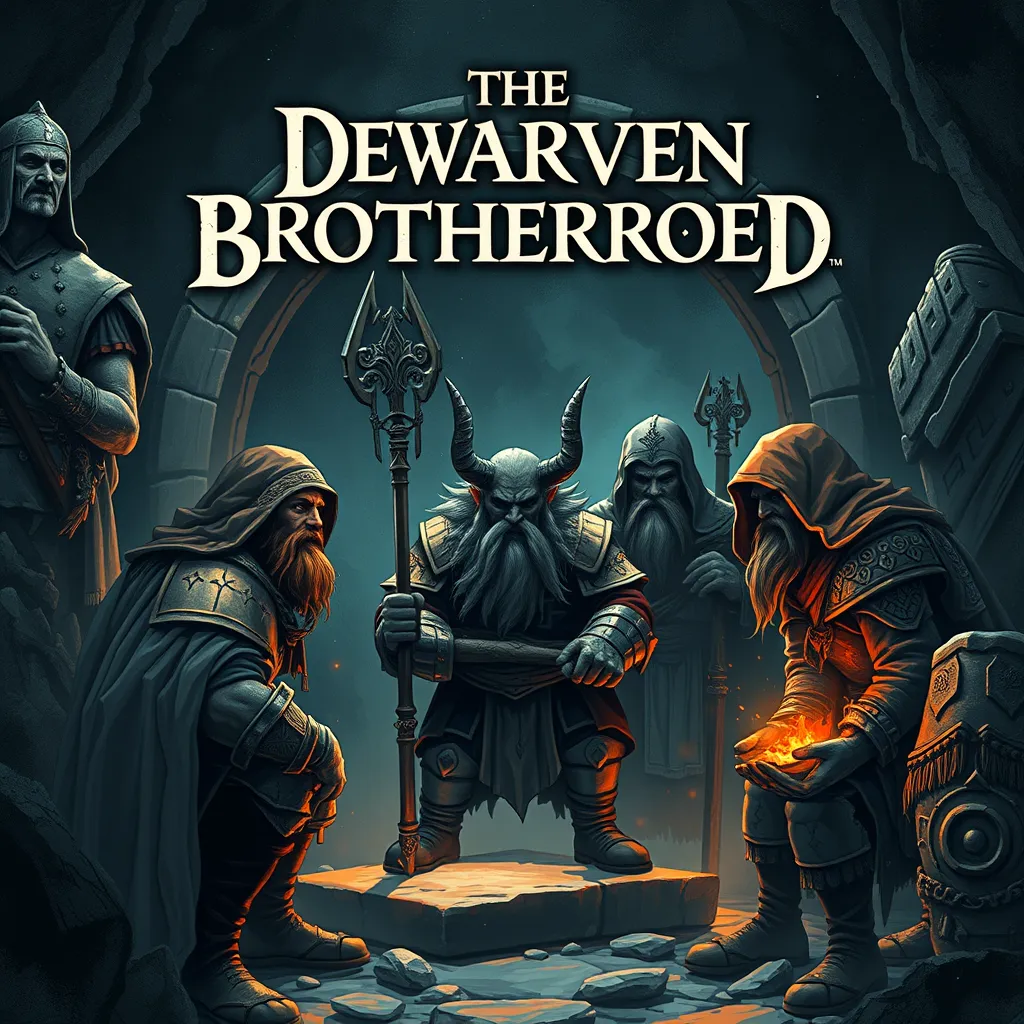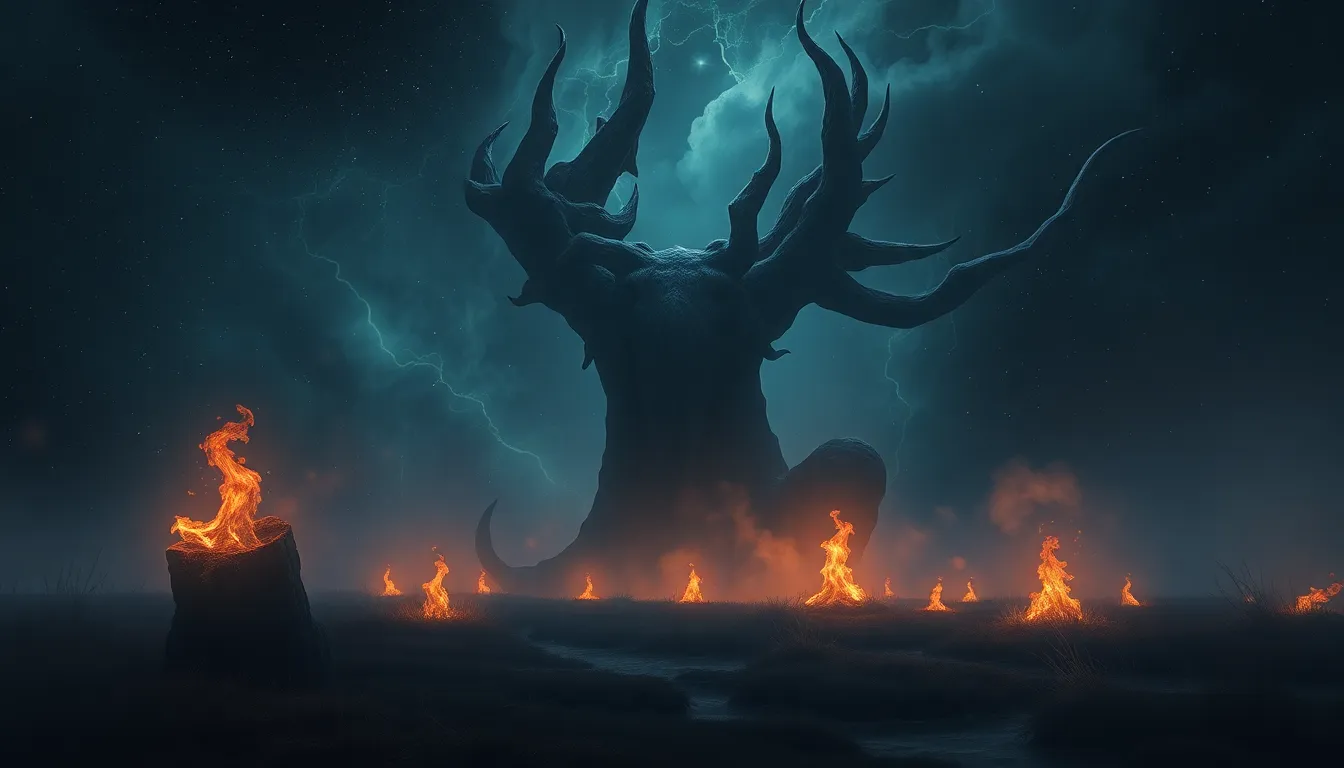The Dwarven Brotherhood: Exploring the Bonds of Clan and Community in Dwarf Legends
Introduction to Dwarven Culture
Dwarven culture is rich in mythology and tradition, serving as a cornerstone of many fantasy narratives. Renowned for their craftsmanship, resilience, and deep connection to the earth, Dwarves occupy a unique place in the tapestry of fantasy literature. Their societies are characterized by a strong sense of community and an unwavering commitment to family and clan. At the heart of this culture lies the concept of brotherhood, which binds Dwarven kin together.
Historical Roots of Dwarven Clans
The history of Dwarven clans is steeped in lore, with each clan having its own origin story that reflects its values and beliefs. Major clans, such as the Ironforge, Stonebreaker, and Goldenshield, have histories that intertwine with the mountains and caves they inhabit. These origins often describe legendary figures who founded the clans, forging bonds that would last for generations.
Geography plays a crucial role in the development of these clans. Clans established in rich mineral deposits often excel in metallurgy and stonework, while those near fertile lands may become skilled in agriculture. This geographical influence shapes not only their economic pursuits but also their social structures and inter-clan relationships.
The Role of Brotherhood in Dwarven Society
Brotherhood among Dwarves is defined by a deep-seated loyalty and commitment to one another. This bond is not merely familial; it extends to all members of a clan, creating a network of support and responsibility. Honor and duty are paramount, with each Dwarf expected to uphold the clan’s reputation and defend its interests.
- Loyalty: Dwarves are known for their steadfast loyalty to their clan, often placing the needs of the group above personal desires.
- Honor: Upholding one’s honor is crucial, with many tales illustrating the lengths to which Dwarves will go to maintain their reputation.
- Duty: Each member has specific roles and responsibilities, which contribute to the overall well-being of the clan.
Rituals and Traditions that Strengthen Bonds
Rituals and traditions are vital in reinforcing the bonds of brotherhood within Dwarven clans. Ceremonies marking rites of passage, such as coming-of-age celebrations, marriages, and funerals, serve to unite the community and honor shared history.
Key ceremonies include:
- Stone Oath: A sacred ritual where a Dwarf pledges loyalty to their clan, binding them in brotherhood.
- Forge Ceremony: Celebrating the creation of a significant artifact, symbolizing the clan’s strength and unity.
- Feast of Ancestors: An annual event where Dwarves honor their forebears, sharing stories that reinforce their identity and values.
Shared labor, such as mining and crafting, also fosters a sense of community. Working side by side, Dwarves forge not only weapons and treasures but also the ties that bind them together.
Legends and Myths of Dwarven Heroes
Dwarven legends are filled with tales of heroism that exemplify the ideals of brotherhood. Stories of legendary figures like Durin, the Deathless, and Thrain, the Great, highlight acts of bravery and sacrifice for the sake of clan and kin. These myths often serve as moral lessons, reinforcing the values of loyalty, courage, and sacrifice.
For example, the tale of the Seven Dwarven Brothers showcases the unity and strength found in brotherhood, as they band together to overcome a powerful foe. Such stories not only entertain but also reflect the core values of Dwarven culture, illustrating how heroism is often intertwined with familial bonds.
Conflict and Resolution within Dwarven Communities
Like any society, Dwarven clans experience conflict. Common sources of tension include disputes over territory, resources, and differing ideologies. However, Dwarves are adept at conflict resolution, often utilizing diplomacy and negotiation to maintain peace.
- Diplomacy: Clan leaders often engage in dialogue to resolve disputes, emphasizing the importance of maintaining alliances.
- Alliances: Forming alliances with other clans can help to mitigate conflicts, fostering a sense of unity among Dwarves.
- War Councils: In cases where diplomacy fails, clans may convene war councils to strategize on the best course of action.
This approach to conflict resolution underscores the Dwarven commitment to brotherhood, as they strive to avoid unnecessary bloodshed and maintain harmony within their communities.
Modern Interpretations of Dwarven Brotherhood
The portrayal of Dwarven brotherhood in contemporary media has evolved, reflecting both traditional legends and new interpretations. In films like “The Lord of the Rings” and video games such as “World of Warcraft,” Dwarves are depicted as fierce warriors with a strong sense of loyalty and honor.
While these modern portrayals often celebrate the values of brotherhood, they may also introduce new elements, such as humor and diversity among Dwarven characters. This evolution allows for a broader understanding of Dwarven culture, appealing to a new generation of fans.
Conclusion: The Enduring Legacy of Dwarven Brotherhood
The legacy of Dwarven brotherhood continues to resonate through fantasy literature and modern storytelling. The importance of clan and community remains a powerful theme, illustrating the enduring nature of these bonds.
As societies evolve, the values embodied in Dwarven brotherhood—loyalty, honor, and duty—hold relevance today. They remind us of the strength found in unity and the importance of community in overcoming challenges. The tales of Dwarven kinship will undoubtedly persist, continuing to inspire and captivate audiences for generations to come.



